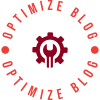In the realm of electronics and DIY repairs, a soldering iron is an indispensable tool. However, merely owning one doesn't guarantee optimal performance or safety. Proper preparation is paramount to achieving clean, reliable solders and safeguarding against accidents. This blog dives deep into the essential steps you must undertake before using your soldering iron, ensuring your projects are both successful and secure.
- Inspection and Cleanliness
Before plugging in your soldering iron, the first line of defense is visual inspection. Check for any signs of damage, such as cracked handles, exposed wires, or worn-out tips. A damaged soldering iron is not just inefficient but also a potential hazard.
Cleaning the Tip:
- Oxidation Removal: Over time, the tip accumulates oxides that hinder heat transfer and can contaminate your solder joints. Use a damp sponge soaked in water (or specialized tip cleaner) to gently wipe the tip until it shines. Avoid abrasive materials as they can scratch the tip's surface.
- Flux Removal: After soldering, flux residue can build up. While flux aids in the soldering process, leftover residue can cause poor connections. Clean it off promptly using the same damp sponge or a flux remover solution.
- Tip Tinning
Tip tinning is the process of coating the soldering iron tip with a thin layer of solder. This not only protects the tip from further oxidation but also ensures better heat transfer and solder flow.
Steps to Tin Your Tip:
- Preheat the Iron: Allow your soldering iron to reach its operating temperature. This usually ranges between 350°C to 450°C (662°F to 842°F), depending on the type of work and solder being used.
- Apply Solder: Hold a small amount of solder wire against the tip. The heat will melt the solder, creating an even coating. Move the solder around the tip to ensure even coverage.
- Wipe Excess: Quickly wipe the excess solder off with your damp sponge, leaving a smooth, shiny finish.
- Selecting the Right Tip
Different soldering tasks require different tip shapes and sizes. Choosing the appropriate tip enhances precision and efficiency.
Common Tip Types:
- Cone: Ideal for general-purpose soldering due to its broad heat distribution.
- Chisel: Suitable for large joints and ground planes because of its wide surface area.
- Fine Point: Excellent for delicate work, such as surface-mount components.
- Hook: Useful for holding onto components while soldering.
Ensure your tip is securely fastened and compatible with your soldering iron model to prevent accidental detachment during use.
- Workstation Setup
A well-organized workspace minimizes mistakes and enhances safety.
Essential Elements:
- Soldering Station: Provides a stable base and often includes temperature control.
- Solder Wire Holder: Keeps your solder wire within easy reach without getting in the way.
- Heat-Resistant Mat: Protects your workbench from heat damage and provides a safe surface to lay down hot tools.
- Third Hand or Clamp: Holds components steady, freeing up both hands for soldering.
- Fume Extractor: Protects you from harmful soldering fumes by extracting them away from your breathing zone.
- Personal Protective Equipment (PPE)
Safety should always be a priority when handling a soldering iron.
Essential PPE:
- Safety Glasses: Protect your eyes from sparks and flying debris.
- Heat-Resistant Gloves: Shield your hands from burns.
- Soldering Mask: Filters out harmful soldering fumes, especially crucial for prolonged use.
- Anti-Static Wrist Strap: Prevents electrostatic discharge (ESD) that can damage electronic components.
- Temperature Calibration (if applicable)
High-end soldering stations often feature temperature control and calibration options. Regularly calibrate your iron to ensure accurate temperatures, critical for precision soldering tasks.
Calibration Steps:
- Follow Manufacturer Instructions: Each soldering station has specific calibration procedures.
- Use a Temperature Probe: Insert a calibrated temperature probe into the tip and adjust settings until the displayed temperature matches the actual tip temperature.
Conclusion: A Solid Foundation for Soldering Success
Taking these meticulous steps before using your soldering iron not only enhances your work quality but also ensures a safer working environment. Remember, the key to masterful soldering lies in preparation and attention to detail. By following this comprehensive pre-use checklist, you'll be well-equipped to tackle any soldering project with confidence and professionalism. Happy soldering!
About Author
You may also like
-
OEM vs. Aftermarket OLED Screens for iPhone 14 Plus: Maximizing Repair Quality in Professional Settings
-
Flex PCB Board: Enabling the Future of Compact and High-Performance Electronics
-
Varactor Diodes vs Standard Diodes: Key Differences and Selection Tips for Electronics Projects
-
How to Select the Right BMS for Lithium Ion Battery
-
Smart Living Starts Small: Everyday Benefits of Using an AMD Mini PCX
